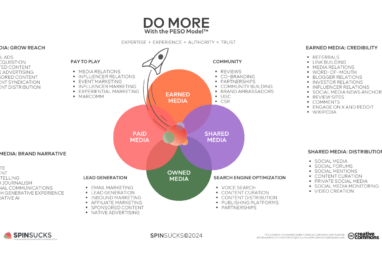The role of communications in reducing the prevalence of poor mental health in the construction industry
About the author
Lauren Pott prepared this article for a CIPR Professional PR Diploma assignment while studying with PR Academy

It is no surprise that poor mental health is a colossal issue within construction.
Naturally, it comes with the nature of the industry that long working hours, tight deadlines and working away from home are all going to have a knock on impact on the mental health of people who endure this almost every day of their working lives. But how and why has this lead to a ‘silence pandemic’ where workers turn to suicide instead of seeking the help they need? How can communications drive the change needed in the industry to reduce the prevalence of poor mental health, and does the root of poor mental health stem deeper than we realise?

It is only in recent years that people have been paying more than lip service to the shocking figures published by Construction UK, showing that three times more low-skilled labourers in construction roles will commit suicide annually than the male national average. This is especially shocking considering that equates to over 2000 suicides per year.
2019 and 2020 have shown us a glimmer of light that long-term change to mental health stigma is high on the agenda for not just the Construction industry, but for general society. Campaigns such as ‘Time to Talk’ and ‘Britain Get Talking’ are frontrunners in seeking change and igniting the long awaited, desperately needed conversation around mental health, beginning to shift attitudes to recognise that ‘it is okay not to be okay’.
In recent months our news has been dominated by protest groups such as Black Lives Matter, calling on change for the way that particular ethnic groups are treated, opening up the unity for widespread change in 2020 across a multitude of areas that communications can be engaged in and contribute to.
Poor mental health – our perception of men
Over time, our established perception of gender binary, and masculinity, is having a devastating impact on men’s mental health. The role of the main ‘breadwinner’ has gone out the window, where a man focused solely on his career. Millennials have encouraged a different expectation from life of ‘wanting it all’, which adds further pressure to men to have the successful career but to also be the family man, meaning mounting pressure to balance the two, on top of other demands such as income, relationships, health and job security.
Masculinity culture contests are still rife, with very few men wanting to break the very mould that seemingly defines them, despite the ongoing detrimental effects that the associated social pressure and stigma to conform to particular gendered behaviour is posing to them.
On countless occasions over the past 4 years, I have heard work colleagues out on project sites respond to incidents by saying ‘he should just man up’ or ‘grow a pair’.
For anyone who hasn’t experienced this archaic attitude in recent years, I can assure you it still exists. The concerning thing is that although sometimes said in gest, such comments further engrain the idea in men’s heads that they cannot openly talk about what is on their mind, and that silence is the best policy. Although we may sometimes accept that this is part and parcel to working in construction and a male dominated environment, we have to fight for change as the impact is undeniably devastating.
Our international film industry also plays an intrinsic role in the stereotyping of men, with this outdated ideology of men being present even in kids’s films that we unwittingly expose our own young children’s minds to. The latest film from the Toy Story franchise cements the idea that male characters Woody and Buzz are emotionally strong leaders by guiding their friends from danger. This is while female characters Boo Peep and Jesse are of a vulnerable and sensitive disposition because they are female. This ideology is universal in this industry, appearing in endless media, including magazines and television dramas. We can’t be surprised that men are resistant to being open about their feelings when they are seriously un-represented in almost all media as being sensitive or vulnerable beings.
This misrepresentation is not one that communications can fight alone, with support being required from more of these influential industries to help break the gender stereotypes that are contributing to the demise of mental health in men, existing so substantially in construction. If communications worked with these industries and took more of a front foot in producing content that could be used in paid media (PESO Model) such as magazine articles, this exposure to the topic of mental health could encourage more men to be open about their own experiences and seek the help they need.
The power of Social Media
Social media is one of the most powerful channels we can use to communicate with an audience. It’s an influencer and encourages users to gain better insight and perspective into trending topics. The power of social media means one post can trigger a chain of responses that can become the most trending feature on that particular platform.
We’ll all remember in the past couple of years how ITV bosses came under heavy scrutiny when two former Love Island stars committed suicide after it transpired that ITV had not provided adequate show aftercare that addressed potential mental health issues. People took to social media to comment on their shock that two outwardly happy people would end their lives, and I too questioned why these contestants did not seek the help they needed.
Like in so many other breaking news topics of recent times, the continually increasing power of social media was used by active publics to call for change in response to these suicides; media bodies began to recognise how more needs to be done to reach out to people to give them the platform they need to openly discuss their mental health in the same way physical health would be identified and treated openly.
The public have a voice that is heard now, that did not exist fifteen years ago, and social media will continue to create advocates for change that will not be silenced, no matter how sensitive the topic. If it wasn’t for the power of social media, the discourse of the topic may never have happened and change never have happen as a result.
Shared media (PESO) like social media has the power to communicate with a variety of demographics that opens up a platform for organisations to utilise to initiate change. With 65% of Twitter users being male, and poor mental health being more prevalent in male construction workers, we’re presented with timely opportunities for our communications strategies to piggyback off Twitter campaigns that are trending such as ‘Britain Get Talking’. This could be the optimum opportunity for communications to target men on social media and intranet sites and get the conversation around mental health started, changing the attitude that men (and women to some degree) have towards discussing their mental health in forums that are established specifically for this purpose.
The deeper roots of poor mental health
Admittedly, there are a number of other unrecognised (or sometime reluctantly acknowledged) factors at play within organisations that cause poor mental health, rather than recognised personal issues such as financial and relationship problems. Certainly within my organisation, I see that diversity and the resulting repression from the lack of it is still a problem factor that needs addressing, and would benefit from using strategic communications, as well as resource and budget to target this root issue; instead of repeatedly re-applying a plaster to the wound, we should invest in how to prevent the injury in the first place.
In 2019, research conducted by Stonewall, in conjunction with data collected by YouGov, found that 35% of people who identity as LGBTQ have never revealed to their work colleagues or employer about their sexual orientation, for the fear of being harassed. Upon discovering this, my initial question was ‘but the existence of the Equality Act 2010 has eliminated LGBTQ related harassment and discrimination in the workplace?’ Sadly, the reality is that employers often do not actively enforce a diverse culture at work. This means that although harassment is not as common as it once was, employees still feel it is safer to repress their LGBTQ identity, consequently having a negative impact on their mental health.
A Ted Talks video by Nikki Webber Allen, reaffirms the sentiment that ‘being strong is killing us’. Allen explains how our feelings are what makes us human, and without our feelings, we would lack our identity as humankind and this sets us apart from other species. Her prompt evokes the concept that it is time to retire the old narrative that is prevalent in so much media that emotion and vulnerability shows weakness, and communications can help with defining a new narrative that challenges this.
Using communications to fix the problem
It would be wrong to continue our blasé attitude towards mental health; that it is someone else’s problem to fix. The onus is not only on businesses, but each and every one of us to play an active role breaking the stereotypes of who men are, and how they behave, so that mental health in construction can improve.
If communications teams in organisations were to find just one male employee that is comfortable recording a vlog sharing their story of poor mental health, this individual’s peers are likely to also be inspired to also join the conversation that will challenge taboos, and attitudes will begin to change.
Communications can play a vital role in filtering this obsolete perception attitude out over time, with strategic communications plans being developed that target younger people both in and out of the industry. Although sometimes referred to as ‘Generation Snowflake’, we’ve seen this demographic having an impact on seeking positive change across a breadth of topics. If communications develops strategic plans to get this generation on board, they’ll likely champion the change the organisation is wanting.
Their influential power will have an impact over and challenge the ‘old dinosaurs’ in our industry who still believe showing signs of emotional vulnerability makes us weak, meaning gradually over time these archaic attitudes will be phased out.
The communications we use in construction should perhaps consider bringing fresh perspective to how construction work is interpreted, by doing away with the image of workers only wearing hard hats and eating butties, and consider replacing existing corporate identity and branding with the picture of men and women engaging in conversations, and happy workers enjoying their job. Organisations should also pay closer attention to the communications they publish both internally and externally that may unintentionally highlight the organisation’s focus on profit, when this messaging is evidently detrimental to employees as it diminishes the importance of mental health.
While communications plays an important role in overcoming poor mental health, it cannot do it alone, and the backing of management, and industry partners, needs to be sought.
If these groups endorse the communications strategy, there is more chance of success as people are influenced by leaders setting an example. It is particularly important that we consistently review mental health as a mutual problem, having an impact on a number of areas of a business including profitability, the underlying objective of a vast majority of businesses. If managers, leaders and employees all collaborate to identify the true scale of poor mental health in our own organisations, we’ll be in the right stead to see ongoing positive change that benefits the industry as a whole, and our wider society.
Using careful planning and a variety of media channels that we so easily have access to enables campaigns and initiatives to gather momentum, maximising the audience reach and exposure achieved by each of them. Communications within an organisation can use its existing channels to show the steps being taken to overcome poor mental health in the workplace, that in turn is picked up by competitors which begins to influence change across the industry.
If organisations are forthcoming with communications media like leaflets with details of health and support available to employees, men become more comfortable with discussing mental health and over time the chronic issue of poor mental health in construction will decrease.


